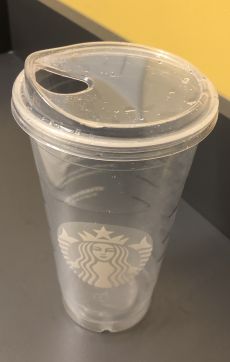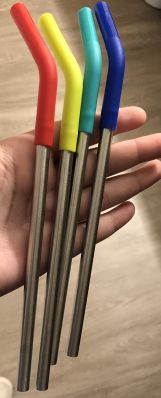You’ve seen an ad for aluminum straws or an ad campaign talking about how plastic straws are hurting the sea-life.
There is a video with 38 million views of a sea turtle with a plastic straw stuck up its nose was posted and caught a lot of attention. The video is heartbreaking as the people are trying to help get the plastic straw out of the sea turtle’s nose. Movements to ban and replace plastic straws have been going on for years but after this video was released is when more people started to join the movement.
The Washington Post explained what the issue is with plastic straws. “Most plastics don’t decompose or are biodegradable when we toss them. Plastics can stay in landfills for hundreds of years. The plastic in the ocean floats around as small pieces (called micro-plastics) that can poison animals and hurt the environment.” then animals consume that.

You may be thinking, well, what about all the other stuff that is made of plastic that we throw away. Well, the same thing happens to them too they can end up in the ocean and harm the sea-life. Plastic straws aren’t the leading cause of plastic waste despite all the talk about them in the media right now. Australian scientists Denise Hardesty and Chris Wilcox estimate using trash collected on U.S. coastlines during cleanups over five years, that there are nearly 7.5 million plastic straws lying around America’s shorelines. They figure that means 437 million to 8.3 billion plastic straws are on the entire world’s coastlines.
Taking this to the Cabrini campus asking students what they know about this topic. Asking them the same three questions about plastic straws.
Angela Rivieccio, a health science major spoke a little about plastic straws. Rivieccio said she has seen ads for metal straws. Then asked if she had ever used one of the alternatives and she said, “Yes I have when I would go to Starbucks I would ask for a sip lip and don’t use a straw”. Her opinion on the plastic straw ban, “Honestly, I think it’s a good idea because it saves the environment especially our sea-life.” Rivieccio said.

Noelle Dutka, early education major, talked a little more about this subject. “Yes, I do know plastic straw alternatives some are metal and others are paper”.
She mentions that she’s used plastic straw alternatives. “I have used both paper and metal. “I personally would rather the metal one, we have a ton in my house, ” Dutka says.
Dutka caries a collapsible metal straw on her key chain for when she needs a straw. Both Dutka and Rivieccio have already been using plastic straw alternatives in their day to day life. Different alternatives to plastic straws are bamboo, hay straws, glass, stainless steel (metal straws), silicone, or paper.
There have been many different ways people have been trying to help. At the Philadelphia Zoo, they have banned plastic straws and only use paper straws. “As of July 1, Seattle is the first U.S. city to ban the use of plastic straws for vendors in the city, as well as plastic stir sticks and utensils.” What city will come next?
If you would like to help end pollution, you can find all the different types of alternative straws on Amazon. Even if plastic straws are only a small part of the problem they are a starting point for cleaning up our planet.


